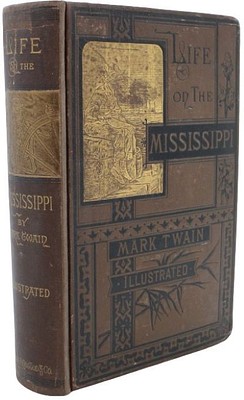George Preble, Three Historic Flags ... 1874
About Seller
522 South Pineapple Avenue
Sarasota, FL 34236
United States
Sarasota Estate Auction specializes in a wide variety of furniture, antiques, fine art, lighting, sculptures, and collectibles. Andrew Ford, owner and operator of the company, has a passion for finding the best pieces of art and antiques and sharing those finds with the Gulf Coast of Florida.
Two ways to bid:
- Leave a max absentee bid and the platform will bid on your behalf up to your maximum bid during the live auction.
- Bid live during the auction and your bids will be submitted real-time to the auctioneer.
Bid Increments
| Price | Bid Increment |
|---|---|
| $0 | $10 |
| $100 | $25 |
| $250 | $50 |
| $1,000 | $100 |
| $2,500 | $250 |
| $7,500 | $500 |
| $20,000 | $1,000 |
| $50,000 | $2,500 |
| $100,000 | $5,000 |
| $250,000 | $10,000 |
About Auction
Aug 5, 2023
Featuring a Lifetime Collection of Early American Pottery, a Fantastic Georg Jensen Sterling Tea Set - 23 OZT, Important Books and Ephemera, and Exquisite Estate Jewelry. Also including art from artists including Roy Lichtenstein, Camille Pissarro, Karel Appel, Victor Vasarely, and many more. Sarasota Estate Auction sarasotaestateauction@gmail.com
- Lot Description
Three Historic Flags And Three September Victories. A paper read before the New-England Historic, Genealogical Society, July 9.1873, By Capt. Geo. Henry Preble, U.S.N., it is 26 pages long, with blue wrappers, housed in a fitted blue box with gilt lettering on the spine that reads “Three Historic Flags And Three September Victories - Preble - 1873”. The box has preserved the booklet and the booklet has clean pages and just two tiny chips at the edge of two pages - they are like nibs - and uncut pages near the beginning, and a couple of slight creases. The box was printed for Charles E. Lauriat of Boston and bound by W. Root & Son of London and measures 11 x 6 3/4 in. wide, the booklet measures 10 x 6 1/8 in. wide, is a first edition, and a rare, but important piece of American history. George Henry Preble (1816 - 1885) was an American naval officer and writer, notable for his history of the U.S. flag and for taking the first-ever photograph of the flag that flew over Fort McHenry and inspired America’s national anthem, "The Star Spangled Banner". He was born into a seafaring family in Portland, Maine; his father was a sea captain, his uncle a noted Commodore (Edward Preble). George entered the Navy in 1835, serving on the frigate United States until 1838. He was in the Florida War in 1841 and on the sloop St Louis for its circumnavigation of the world in 1843 to 1845, taking ashore the first American force ever to land in China. In the Mexican-American War, he participated in the capture of Alvarado, Veracruz, and Tuxpan. He became a master in 1847 and then a lieutenant, and he sailed with the famous Mathew Perry to Japan in 1853, which opened up Japan to American trade. He was a lighthouse inspector and served on the Narragansett from 1859 to 1861, then took command of a steam-gunboat, serving with David Farragut on the Mississippi River during the Civil War, was promoted in 1862 and given command of the steam-sloop Oneida to blockade Mobile Bay. When the Confederate cruiser CSS Florida eluded him, Preble was dismissed from the Navy, but was reinstated after the captain of the Florida testified that superior speed alone had saved his ship; additionally, the officers on Oneida testified that Preble had done nothing wrong. According to their accounts, Florida appeared around 5 pm, bearing the ensign of a ship of the English Navy. Preble was in command of Oneida and Winona, and because the other ships were in for repairs, his usual complement of six ships had been reduced to two. Winona was off chasing another blockade runner and was returning from that chase when Florida began her run, and one of Oneida's boilers had been shut down for repairs, leaving only one iron boiler working. (One of the officers stated that the Navy's choice to use cheaper iron rather than steel was actually the cause of the problem.) When Florida began her run, Preble moved Oneida ahead of Florida and ordered shots fired across her bow. Believing the ship was English, two warning shots were fired over her bow and a third shot into her forefoot (the part of a ship where the prow joins the keel), instead of the customary single warning shot; all three shots were fired soon after the Florida was in range of Oneida's guns. When Florida did not stop, Preble ordered a fourth shot be fired directly at the enemy ship; this shot missed, Florida lowered her false ensign, and made directly for Fort Morgan. That’s when Preble realized the ship was a Confederate vessel. With one boiler knocked out, the Oneida was unable to keep up with Florida, which escaped into the bay. Nevertheless, Oneida kept firing at the ship for nearly a half hour, but Florida made it safely to Fort Morgan. In addition to the speed issue, reports stated there was poor visibility that contributed to poor marksmanship from Oneida's gun crew. After being reinstated, Preble was given command of another vessel, the sailing sloop St Louis. Preble was also a writer about naval and historical topics, and he was a collector of naval documents. His personal library of books and documents related to the sea are now located in The George Henry Preble Collection at the Navy Department Library. In 1868, he also published a genealogical history of the Preble family in North America, which included his own biography and portrait, and the book sets forth a defense of his actions that led to his dismissal from the Navy, as well as his efforts and others’ that led to his exoneration and later reinstatement. In 1872, he published his famous History of the American Flag, which is still cited as an important source to learn about our flag. He also took care of the original "Star-Spangled Banner" which had flown over Fort McHenry and had the flag sewn to a piece of sailcloth in order to preserve it. After the war, Preble commanded the steamer State of Georgia and rescued 600 passengers from the wrecked steamer Golden Rule. He was at the Boston Navy Yard from 1865 to 1868, where he was promoted to captain in 1867, then commanded the steamer Pensacola until 1870. He became commodore in 1871, commanded the Philadelphia Navy Yard from 1873 to 1875, became rear admiral on September 30, 1876, retired in 1878, and died in 1885 while living near Boston. George Armistead (1780 - 1818) was an American military officer who served as the commander of Fort McHenry during the Battle of Baltimore in the War of 1812. Born in Virginia, he began his military career fighting as an ensign in France, then rose to Second and First Lieutenant; later he was commissioned as a Lieutenant in the artillery and became a Captain in 1806. During the War of 1812, he was promoted to Major and distinguished himself at the capture of Fort George in Canada. He was given the honor of carrying the captured battle flags to President Madison in Washington, and upon his arrival, he was ordered to take command of Fort McHenry in Baltimore harbor., and that’s where this story really begins. As commander of the fort, he ordered a large garrison flag to be made by Mary Pickersgill - the same flag that would fly over Fort McHenry and inspire Francis Scott Key to write the Star Spangled Banner as Key watched the fort being attacked by the British. Armistead successfully defended the fort against the British bombardment, earning a Brevet promotion to Lieutenant Colonel; he remained in command of the fort until his death in 1818. Armistead passed the flag on to his wife for safekeeping and then it went to his daughter, Georgina Appleton (her married name), and she gave the flag to Preble, who had the flag backed with canvas to preserve and support it, and Preble took the first ever photograph of the flag in 1873 as it was unfurled at the Boston Navy yard. It was a huge flag and needed the sailcloth backing to support it against the wind. So the Star-Spangled Banner flag was given to Armistead following the bombardment of Fort McHenry and was passed down through his family. After the photograph was taken by Preble, Appleton’s son, Eben, gifted the flag to the Smithsonian, and his grandson, Ebenezer Appleton, lent it to the Smithsonian Institution in 1907 and made the loan permanent in 1912, and the flag is now housed at the Smithsonian. A long convoluted story, but that is the history of the Star Spangled Banner, and why George Preble is important: he took the first ever photograph of the flag and preserved it for American history. #1681 #63
- Shipping Info
-
SHIPPING INFORMATION·
Sarasota Estate Auction IS NOT RESPONSIBLE FOR SHIPPING. All shipping will be handled by the winning bidder. Sarasota Estate Auction recommends obtaining shipping quotes before bidding on any items in our auctions. If you are interested in obtaining any information on local shippers, please send us an email and we will kindly send you a list of local shippers. Refunds are not offered under any circumstances base on shipping issues, this is up to the buyer to arrange this beforehand.
Premier Shipping, info@premiershipment.com
-
- Payment & Auction Policies
-
Available payment options
We accept all major credit cards, wire transfers, money orders, checks and PayPal. Please give us a call at (941) 359-8700 or email us at SarasotaEstateAuction@gmail.com to take care of your payments.
-
- Buyer's Premium



 EUR
EUR CAD
CAD AUD
AUD GBP
GBP MXN
MXN HKD
HKD CNY
CNY MYR
MYR SEK
SEK SGD
SGD CHF
CHF THB
THB






















